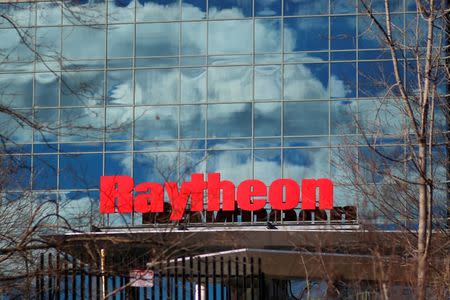U.S. Air Force picks Raytheon, Lockheed for next-gen cruise missile
By Mike Stone (Reuters) - The U.S. Air Force has awarded Lockheed Martin Corp and Raytheon Co separate $900 million contracts to continue work on a replacement for the AGM-86B air-launched nuclear cruise missile, the Pentagon said on Wednesday. Although the award for the new Long Range Standoff weapon (LRSO) comes amid rising tensions with North Korea, the Air Force had asked the defense industry last summer for proposals to replace the aging nuclear cruise missiles and intercontinental ballistic missile system as the military moved ahead with a costly modernization of its aging atomic weapons systems. "This weapon will modernize the air-based leg of the nuclear triad," said Secretary of the Air Force Heather Wilson in a statement. LRSO, which is a plane launched weapon, "will be capable of penetrating and surviving advanced integrated air defense systems from significant standoff range" Lockheed Martin said in its statement about the award. The relatively small contract award is a milestone that allows Lockheed and Raytheon to continue parallel detailed development and prototyping for the cruise missile replacement. For the next four and a half years, the companies will perform the technology maturation and risk reduction of the weapon. Once complete, the Air Force will choose a single contractor for engineering, manufacturing and deployment. The Air Force plans to procure approximately 1,000 LRSO flight bodies, with development and procurement costs estimated at about $10 billion, according to an Air Force spokesperson. Only some of the bodies will be armed with nuclear weapons, the others will be used for testing or spares. The Air Force has said it plans to start fielding LRSO by 2030. The current cruise missile was first fielded in the early 1980s with a 10-year life. On Monday, the Air Force awarded Boeing Co and Northrop Grumman Corp separate contracts to continue work on the replacement of the aging Minuteman III ICBM system. Modernization of the U.S. nuclear force was expected to cost more than $350 billion over the next decade. The United States plans to replace its aging systems, including bombs, nuclear bombers, missiles and submarines. Some analysts estimated the cost at $1 trillion over 30 years. (Reporting by Mike Stone and Eric Walsh in Washington; Editing by Peter Cooney and James Dalgleish)

 Yahoo Finance
Yahoo Finance 

